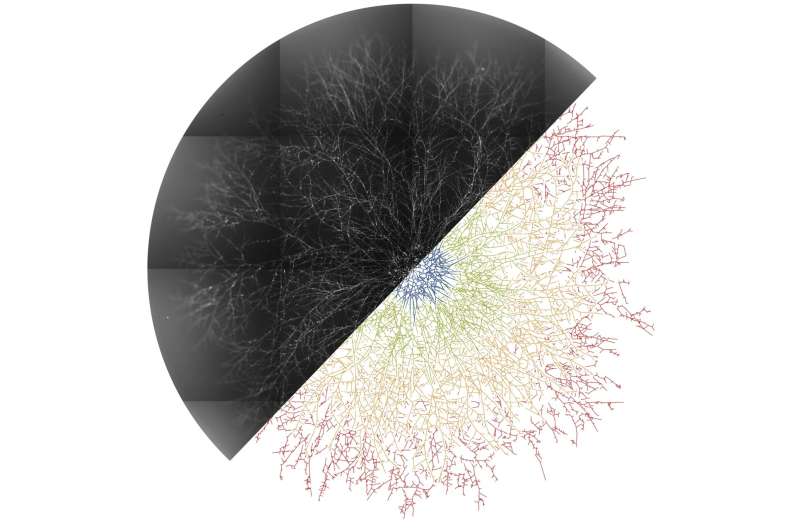'Fungal feature tracker' could accelerate mycology research

A new software tool called Fungal Feature Tracker could accelerate understanding of fungal morphology and growth. Guillermo Vidal-Diez de Ulzurrun and colleagues in the laboratory led by Yen-Ping Hsueh at Academia Sinica, Taipei, Taiwan, present the tool in PLOS Computational Biology.
Out of an estimated 5 million different species of fungi, most produce complex networks of filamentous structures that they use to redistribute nutrients across long distances. This allows the organisms to survive extreme conditions and sometimes they may reach the size of entire forests. Despite the diversity and ubiquity of filamentous fungi, their morphology and growth dynamics are poorly understood, due to a lack of efficient quantitative techniques.
By harnessing recent advances in imaging and informatics, Vidal-Diez de Ulzurrun and colleagues have now designed a new method for capturing high-quality, cellular-resolution images of live fungi using basic machinery. They also developed a new software tool, Fungal Feature Tracker, to analyze the images.
Fungal Feature Tracker can use a single image to quantify the amount of spores produced by a fungus, compute their size and shape, or count and measure all the branches of an intricate fungal network. It can also analyze time-lapse images to track changes in a fungal network over time. In short, it could enable faster collection of quantitative data than is possible with traditional manual techniques.
"Fungal Feature Tracker is an easy-to-use and powerful tool that will advance our understanding of the growth and biology of filamentous fungi," says Hsueh.
Next, the Hsueh lab plans to develop additional image-based tools that improve on manual methods, and to study more growth scenarios and fungal features that are more complex. For instance, they hope to study the formation of traps in nematode-trapping fungi by means of time-lapse analysis. In general, they anticipate a rapid, field-wide increase of the use of image analysis to study filamentous fungi.
More information: Vidal-Diez de Ulzurrun G, Huang T-Y, Chang C-W, Lin H-C, Hsueh Y-P (2019) Fungal feature tracker (FFT): A tool for quantitatively characterizing the morphology and growth of filamentous fungi. PLoS Comput Biol 15(10): e1007428. doi.org/10.1371/journal.pcbi.1007428
Journal information: PLoS Computational Biology
Provided by Public Library of Science





















